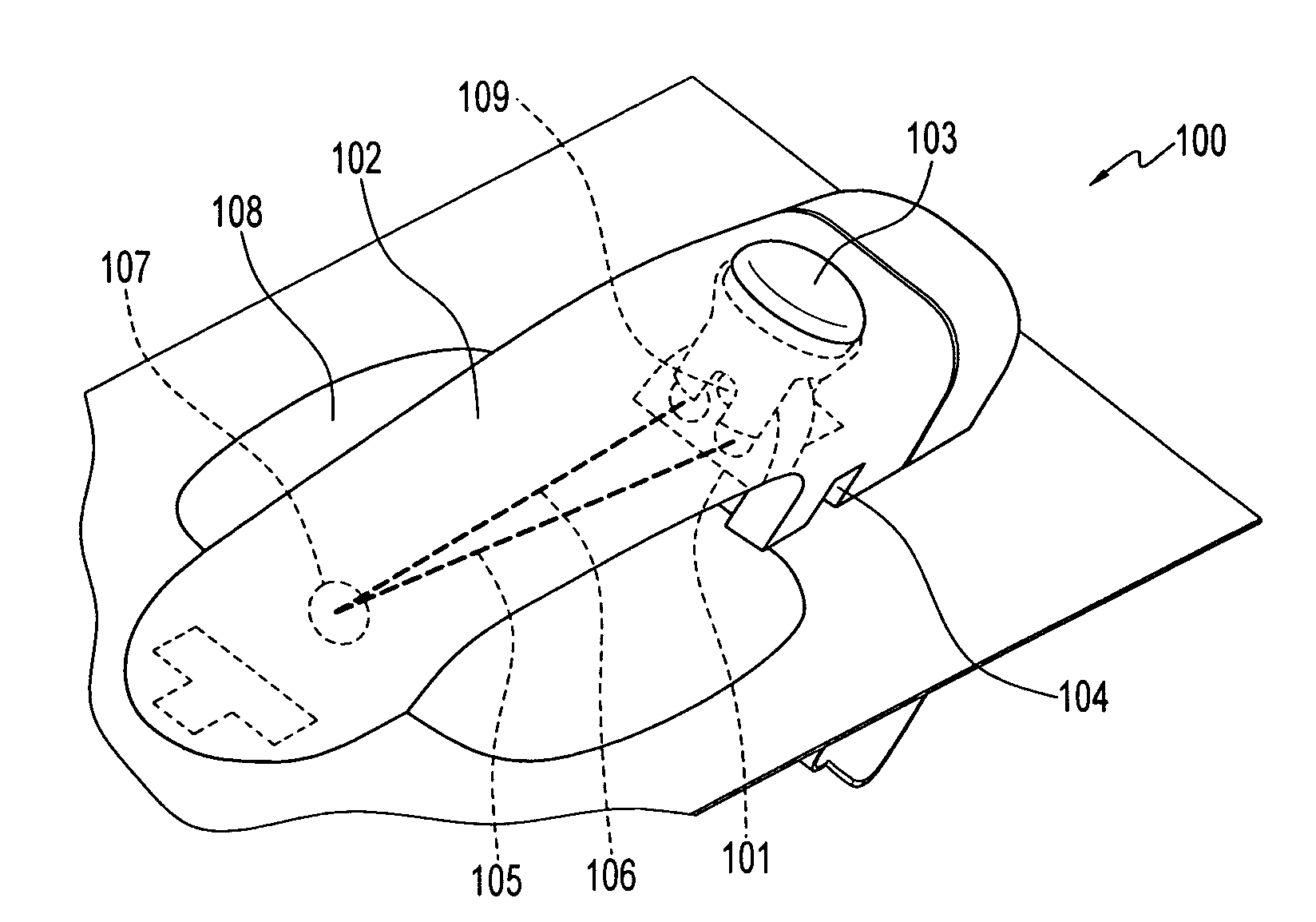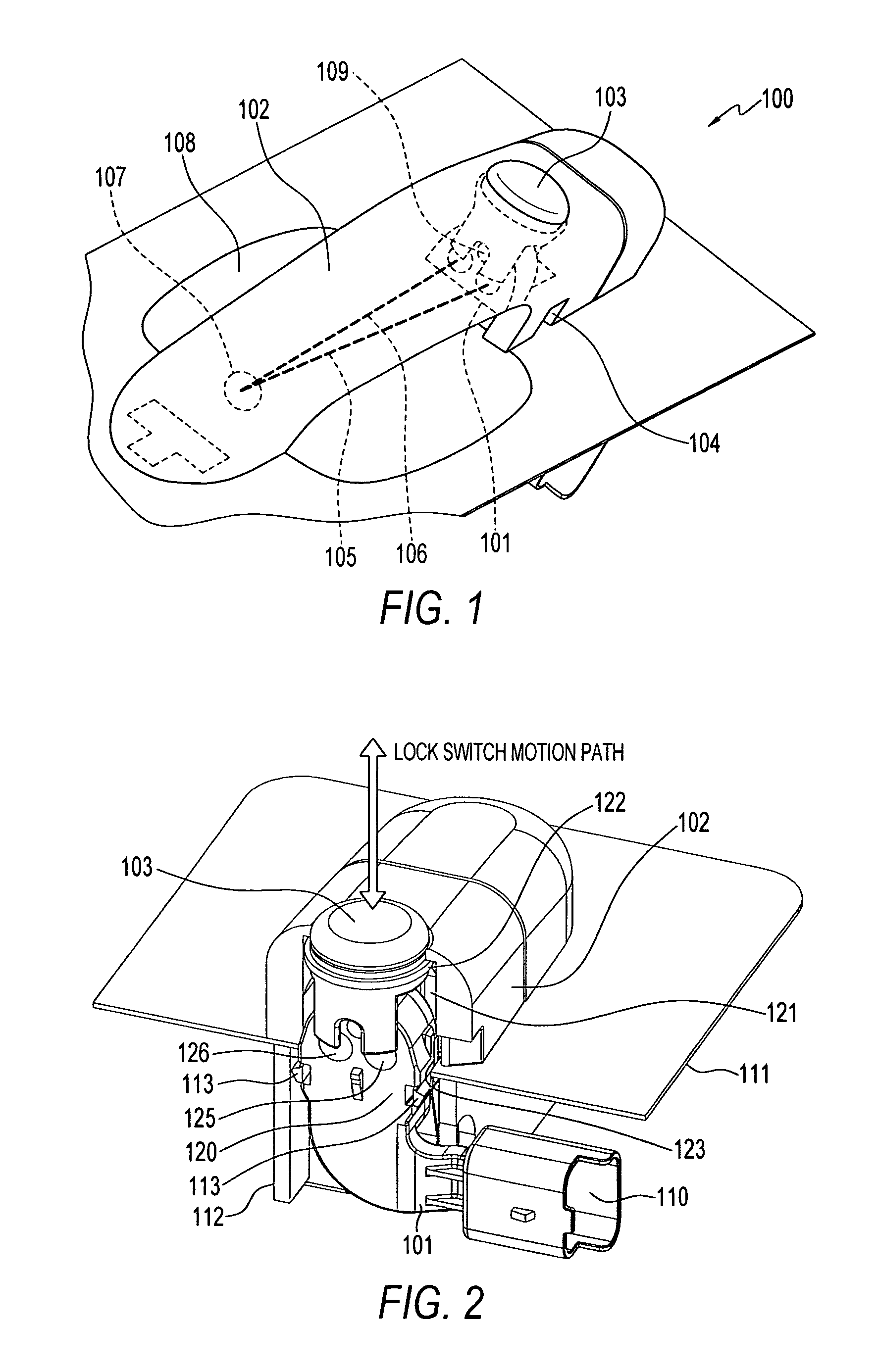Passive entry sensor system
a sensor system and passive technology, applied in the field of passive sensor systems, can solve the problems of difficult specific action, time-consuming and unergonomic, loss or damage of keys, etc., and achieve the effect of minimizing the number of components and limiting the power consumption of the passive sensor system
- Summary
- Abstract
- Description
- Claims
- Application Information
AI Technical Summary
Benefits of technology
Problems solved by technology
Method used
Image
Examples
Embodiment Construction
[0037] The particular values and configurations discussed in these non-limiting examples can be varied and are cited merely to illustrate at least one embodiment of the present invention and are not intended to limit the scope of the invention.
[0038]FIG. 1 of the accompanying drawing illustrates a front perspective view of the passive entry sensor system 100 arranged in a vehicle door handle assembly according to a preferred embodiment. The sensor system includes a sensor 101, a portion of which is mounted in an end of a door handle 102, and a reflector 107, such as a mirror or a flat painted area, located at an opposing end of the handle facing the sensor (all shown in dotted line). The sensor 101 is adapted to transmit an electromagnetic beam of radiation, in this case an IR beam 105, at an angle along the length of the handle to the reflector 107 and to detect the IR beam 106 reflected back by the reflector. The optical sensor 101 is configured to detect an interruption or other...
PUM
 Login to view more
Login to view more Abstract
Description
Claims
Application Information
 Login to view more
Login to view more - R&D Engineer
- R&D Manager
- IP Professional
- Industry Leading Data Capabilities
- Powerful AI technology
- Patent DNA Extraction
Browse by: Latest US Patents, China's latest patents, Technical Efficacy Thesaurus, Application Domain, Technology Topic.
© 2024 PatSnap. All rights reserved.Legal|Privacy policy|Modern Slavery Act Transparency Statement|Sitemap



